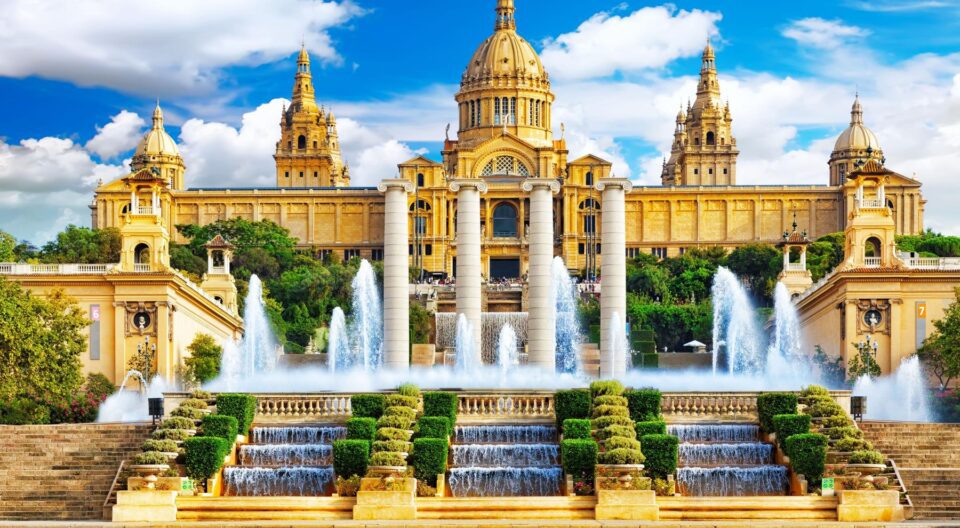Experienced travelers know that the true essence of Spain isn’t just Barcelona but also its surroundings. After visiting the museums of Catalonia’s capital, strolling through its streets, and admiring its magnificent buildings, it’s time to explore nearby locations. Choose where to go from Barcelona for a day trip based on your preferences. It could be a mountain village of witches or a soft sandy beach by the azure sea.
You can visit a secluded monastery, wander through Spanish quarters, conquer peaks or venture into a sacred cave, explore museums, or relax on a park lawn. There’s no need to adjust your plans based on transportation schedules; sometimes it’s more convenient to rent a car and plan your route. So, what’s out there beyond Barcelona?
Girona
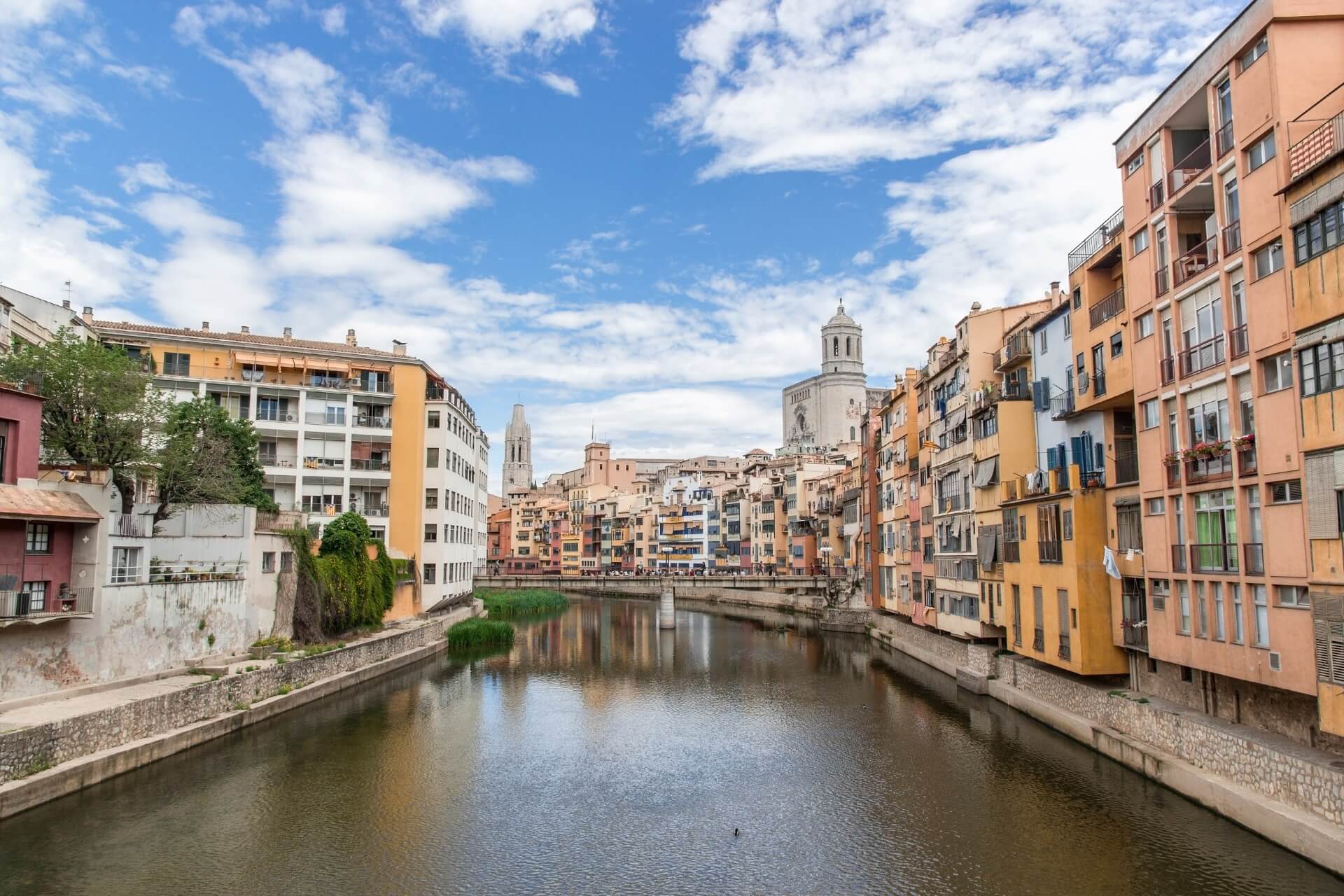
Located 100 km northeast of Barcelona, Girona is split in two by a river. The modern areas are on the left bank, while the historical treasures are on the right. Fans of “Game of Thrones” will recognize Girona’s medieval streets as Braavos. The majestic Cathedral of Girona, built from the 11th to the 18th centuries, stands out against the low-rise buildings, showcasing various architectural styles. Inside the cathedral is a museum.
The Arab Baths, inspired by ancient Roman baths, were built 900 years ago and still feature a picturesque pool surrounded by columns. The Historical Museum of Girona has a vast collection of artifacts in 14 exhibition halls. The Museum of Jewish History provides insights into the life, customs, and daily life of ethnic communities from the 9th to the 15th centuries. The Art Museum in the Episcopal Palace houses artworks spanning several centuries.
Figueres
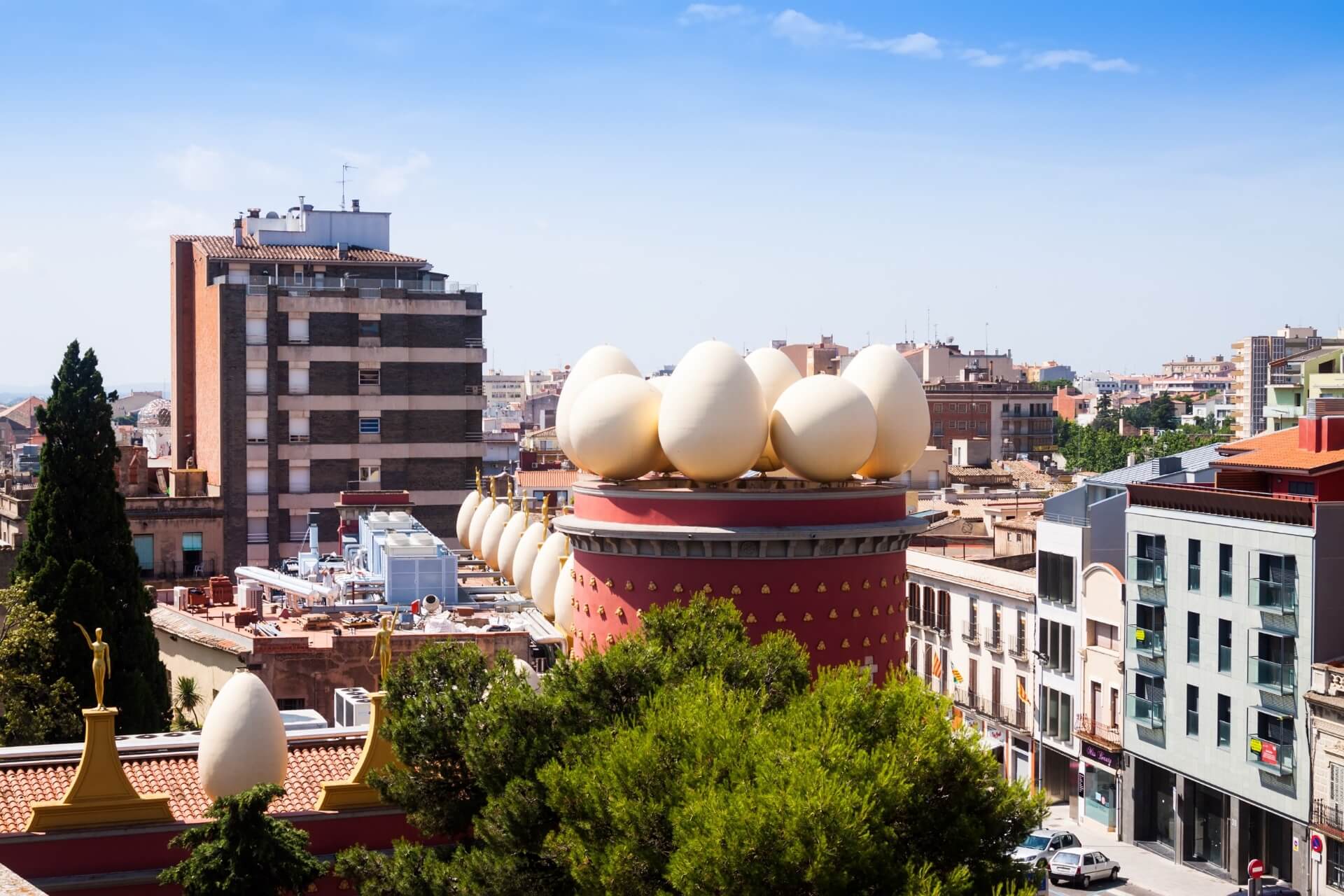
The city made famous by Salvador Dalí, who was born and is buried here, is 117 km from Barcelona. Figueres’ center can be explored in just 15 minutes. It borders France and is Spain’s wine capital, making it a must-visit for wine enthusiasts.
The heart of Figueres is the Dalí Theatre-Museum, where the artist’s crypt is located. Dalí turned the theater building into an installation, making it visible from afar. Both adults and children will enjoy the unique Toy Museum of Catalonia, housing 4,500 toys made from various materials for children’s and adults’ entertainment over the years. The museum also includes toys from famous Spaniards and rare specimens depicted in old photos and postcards.
The Church of St. Peter, with a thousand-year history, is an example of Catalan Gothic architecture. The well-preserved 18th-century San Ferran Castle is another highlight.
Besalú
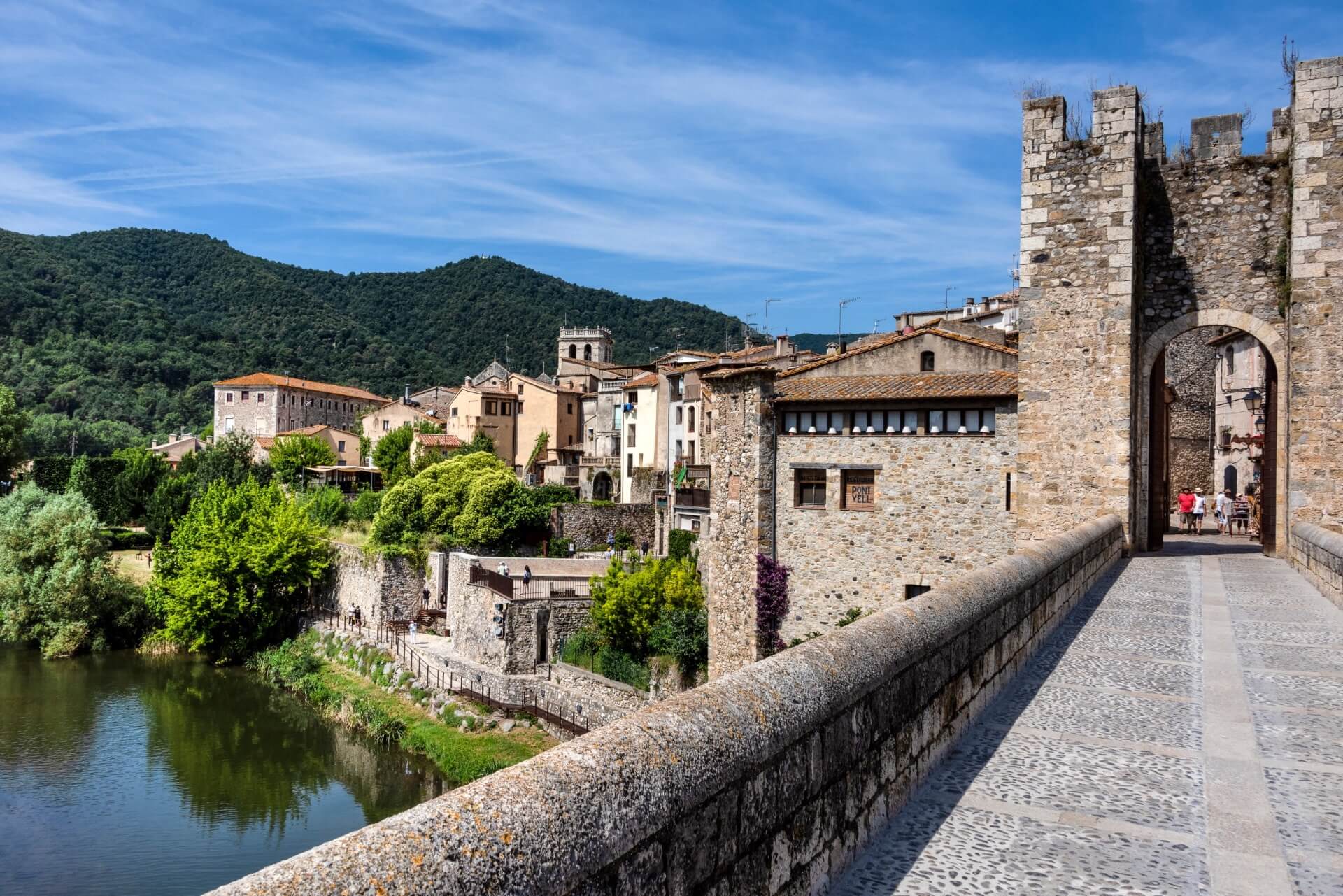
A tiny ancient island in Girona province, 1.5 hours from Barcelona, Besalú has a population of around 2,500. The city’s stone towers and structures stand out against the green hills, creating a memorable and unique appearance. Besalú’s history began over a thousand years ago with the construction of a castle, the ruins of which can be visited.
The main attraction is the ancient seven-span bridge from the 12th century, leading travelers into the historic center. The medieval atmosphere is so strong that visitors might forget the current century. The town features columns, balconies adorned with flowering plants, and old facades, exuding the spirit of European antiquity.
The “Museum of Microminiatures” in Besalú is divided into three sections, with exhibits visible to the naked eye, through magnifying glasses, and under microscopes. The Church of St. Peter, the Hospital of St. Julian, an old mill, a watchtower, the Carnella house, and the main square all add to Besalú’s charm for tourists.
Rupit
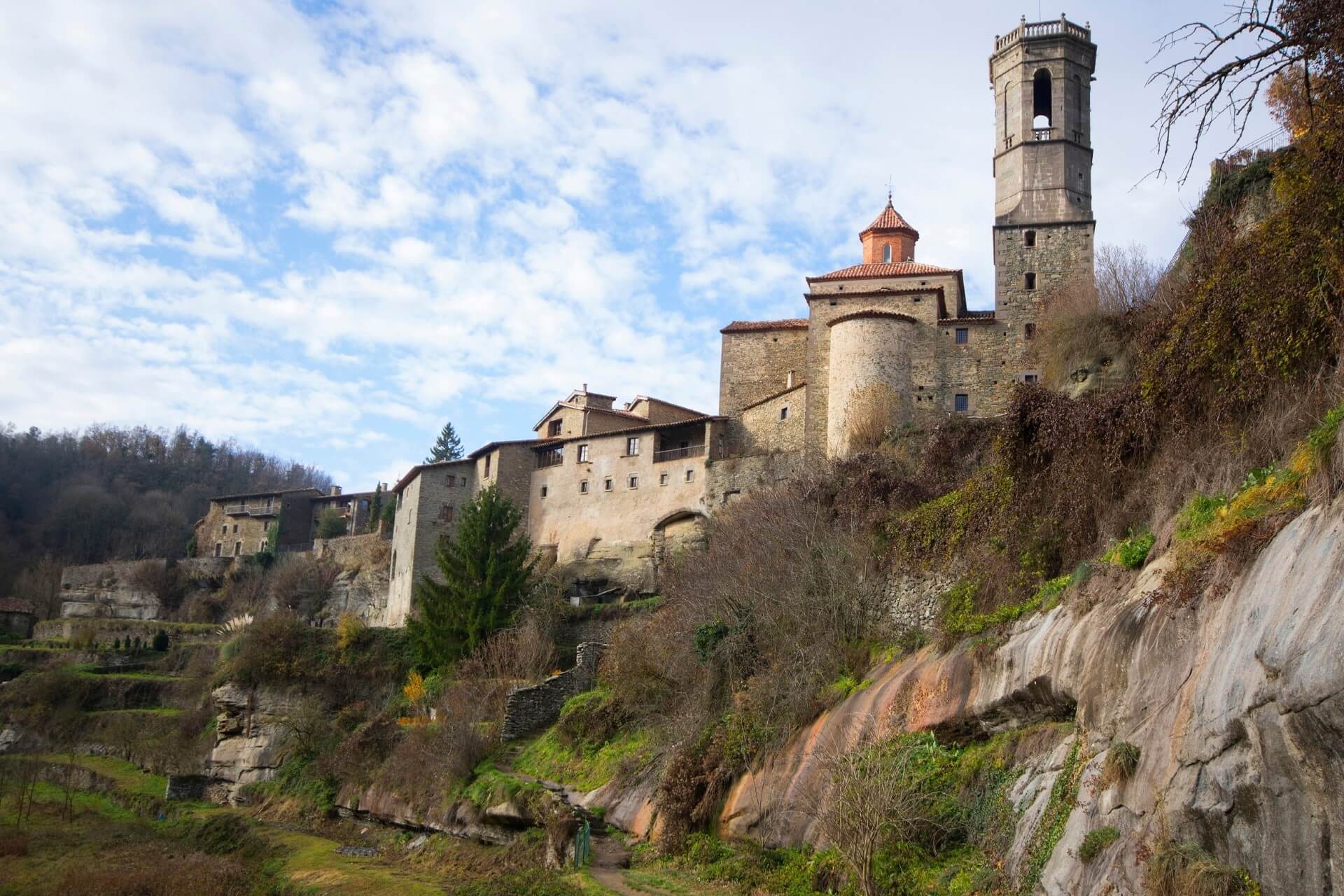
This mysterious ancient city of witches is accessible only by car, located just over 100 km from Catalonia’s capital. The inhabited area emerged in the 12th century in the mountains amidst forests. Despite being cut off from civilization by an impassable gorge, early settlers felt protected by nature itself. The location atop cliffs was so inaccessible that even Napoleon abandoned plans to conquer it.
Its remoteness protected residents during Europe’s plague outbreaks. According to legend, half the population were witches, prompting the god-fearing locals to call the inquisitors to Rupit. Suspected witches, stubborn Jews refusing to convert to Catholicism, and any townsfolk suspected of heresy faced persecution. Visitors today can still feel a certain tension and heavy energy lingering from those grim times as they stroll through Rupit’s narrow stone streets.
Modern Rupit is divided into two parts: the historical side and the inhabited side. The town has about 400 residents, with amenities like a school, kindergarten, markets, church, and court, not to mention electricity. Visit this picturesque mystical town that combines medieval and modern elements, reality, and legends.
Castellfollit de la Roca
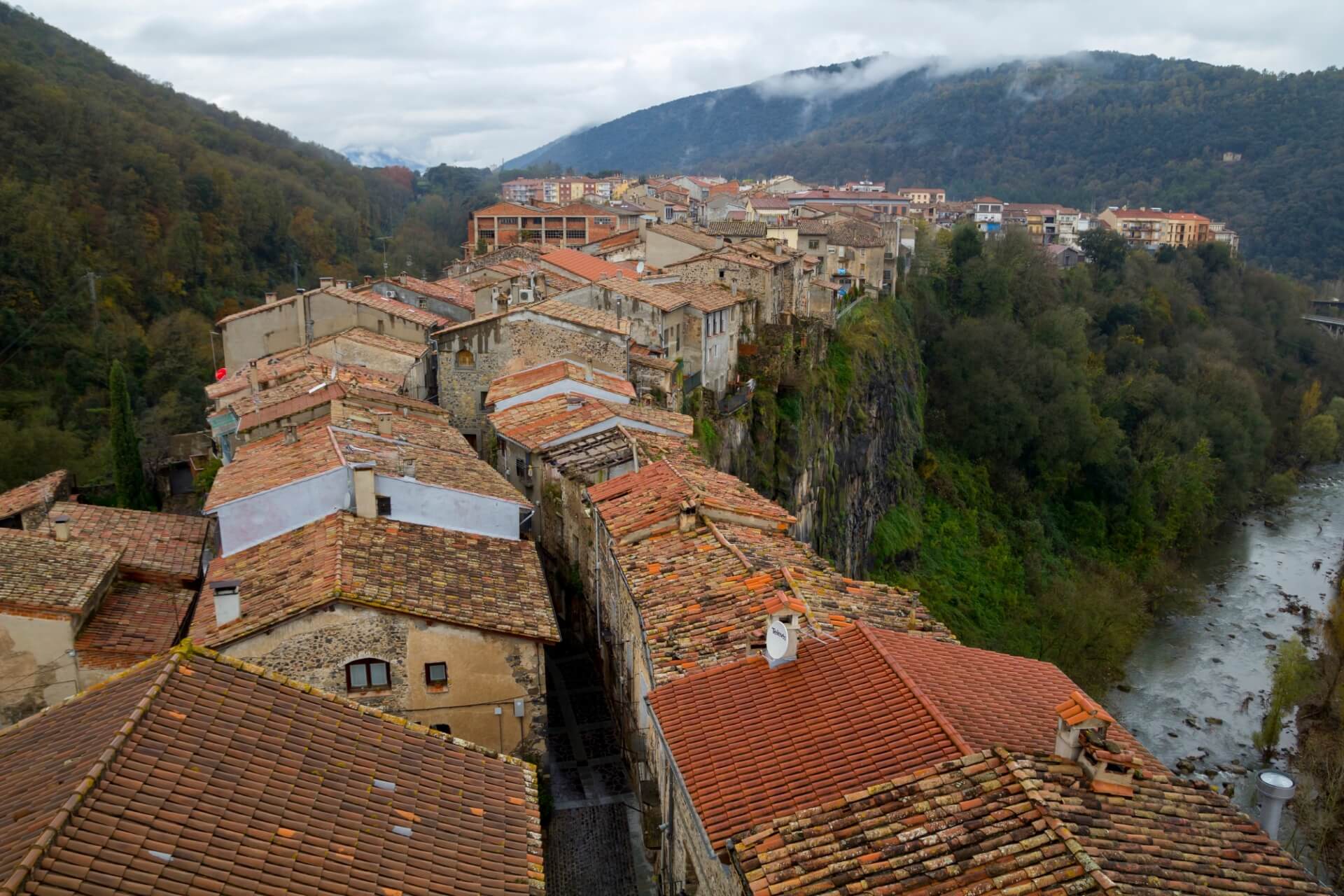
About two hours from Barcelona lies this tiny cliffside town with a complex name. First mentioned in the 12th century, Spanish barons chose the rocky promontory for their family estates, surrounded by fortress walls for safety. While the walls began to crumble after 15th-century earthquakes, the area remains seismically active, with 70 active volcanoes in the Garrotxa volcanic area, including Castellfollit de la Roca.
Despite this, the town thrives, with a population of around 1,000. Its lack of tourist crowds gives it a secluded, semi-abandoned feel. “National Geographic” recognized Castellfollit de la Roca as one of the top ten places with the most beautiful views, making it a worthy day trip destination. Pack a picnic blanket and basket to relax amidst Spanish landscapes and medieval architecture remnants.
Vic
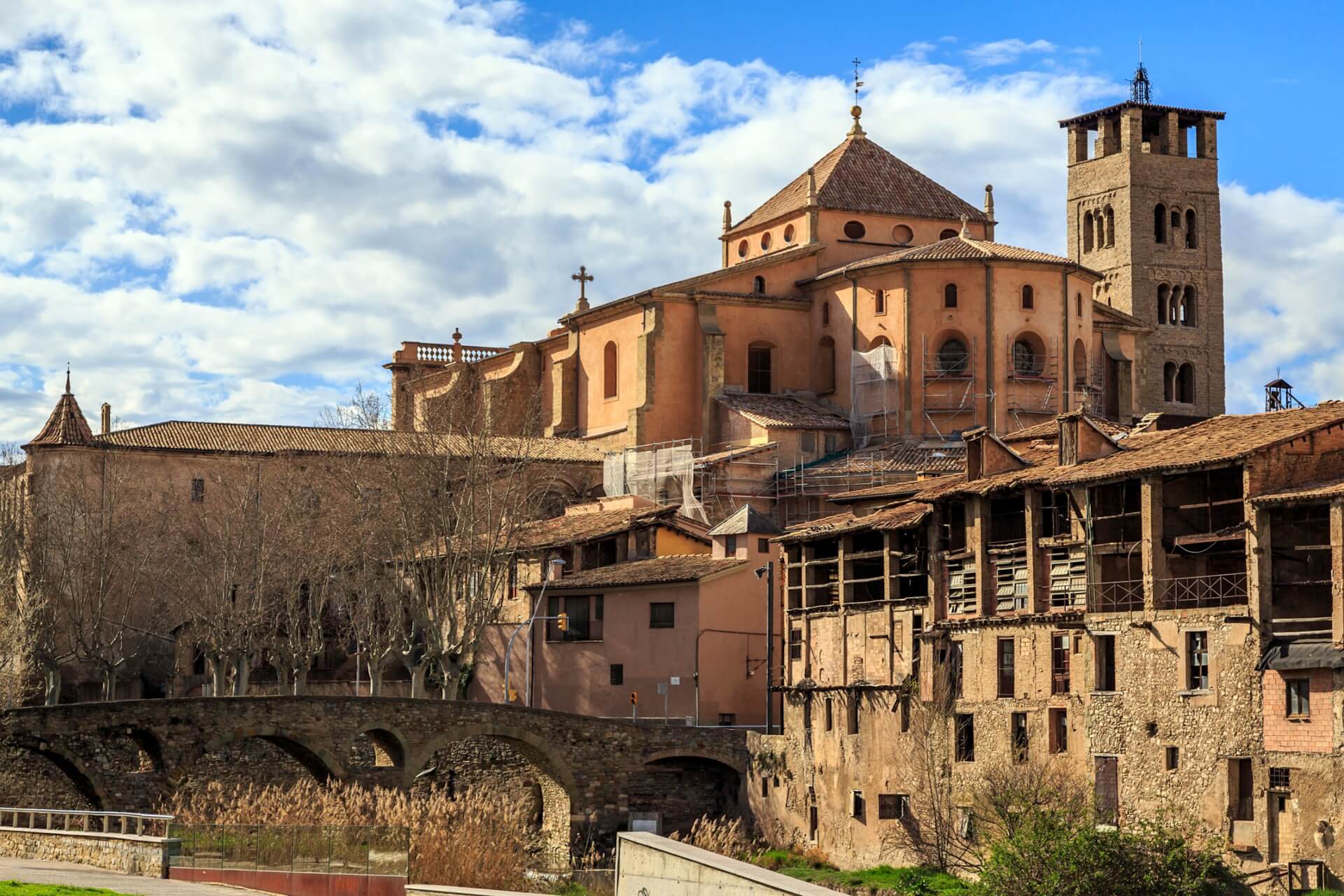
A little over an hour’s drive to the ancient city of Vic reveals a place with a rich, prolonged history. Vic’s uniqueness lies in the harmonious blend of various European cultures that influenced its development over time. The streets feature Baroque-style modernist houses and Renaissance-era buildings, creating a balanced and charming Spanish provincial atmosphere.
The best days to visit Vic are Tuesday and Saturday, when the main square hosts local markets selling everything from honey to embroidered table linens. Vic’s main attractions include the Episcopal Museum, Plaza Mayor, a thousand-year-old Romanesque tower, and more. If visiting in December, don’t miss the annual festival with a medieval market and costumed performances.
Montserrat Monastery
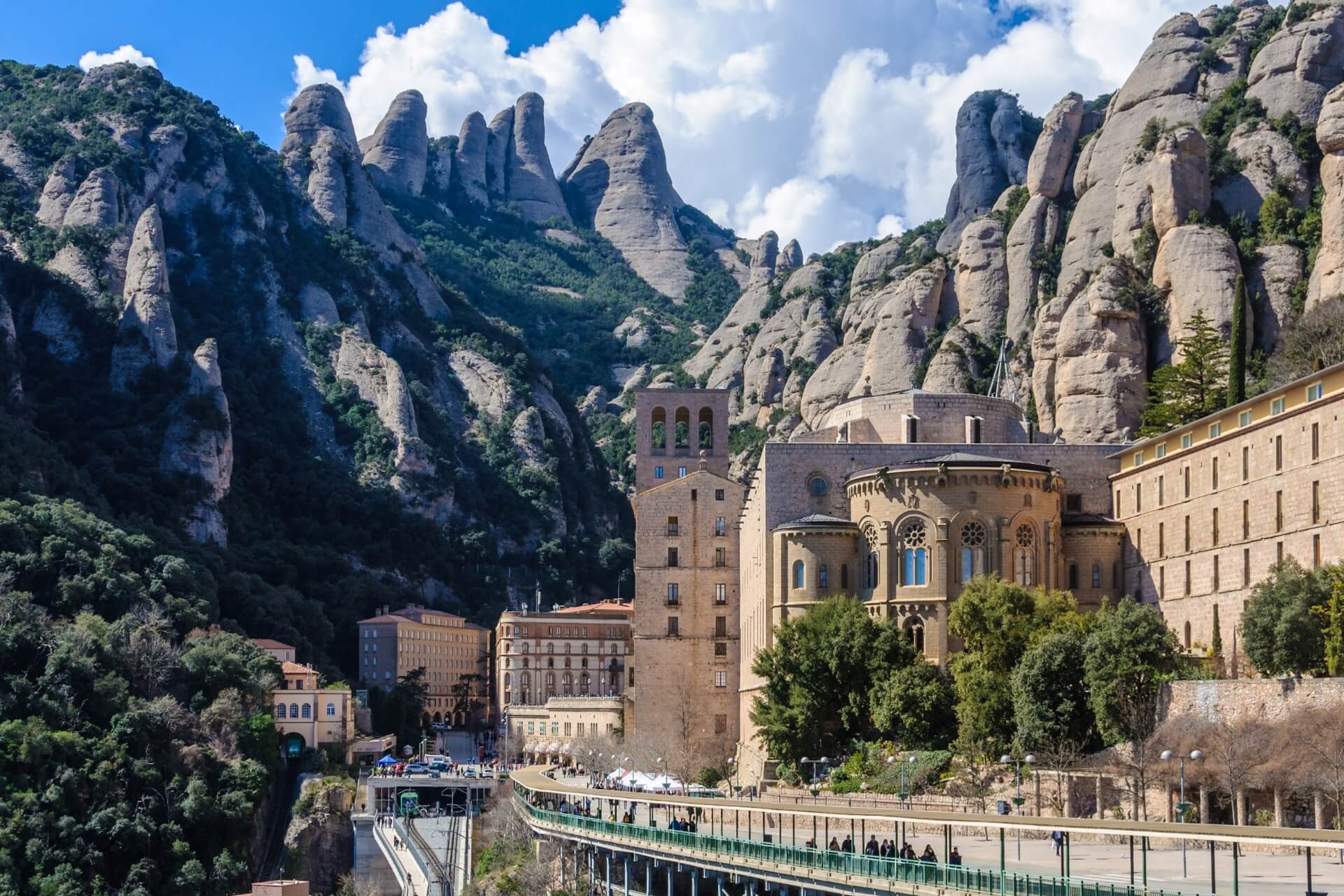
Just an hour’s drive from Barcelona, the Montserrat Monastery is Catalonia’s pilgrimage center. You can also reach it by the daily bus or train. Montserrat Monastery offers a “three-in-one” experience for travelers: a thousand-year-old hermitage housing about a hundred monks, an interesting cultural-historical museum with six collections, and the Holy Cave, a pilgrimage site where the Virgin Mary appeared in the late 9th century.
Montserrat Mountain, familiar to climbers, attracts rock climbers from across Europe. Numerous hiking trails of varying difficulty lead through the Montserrat nature reserve, offering rich flora and fauna to admire.
Badalona
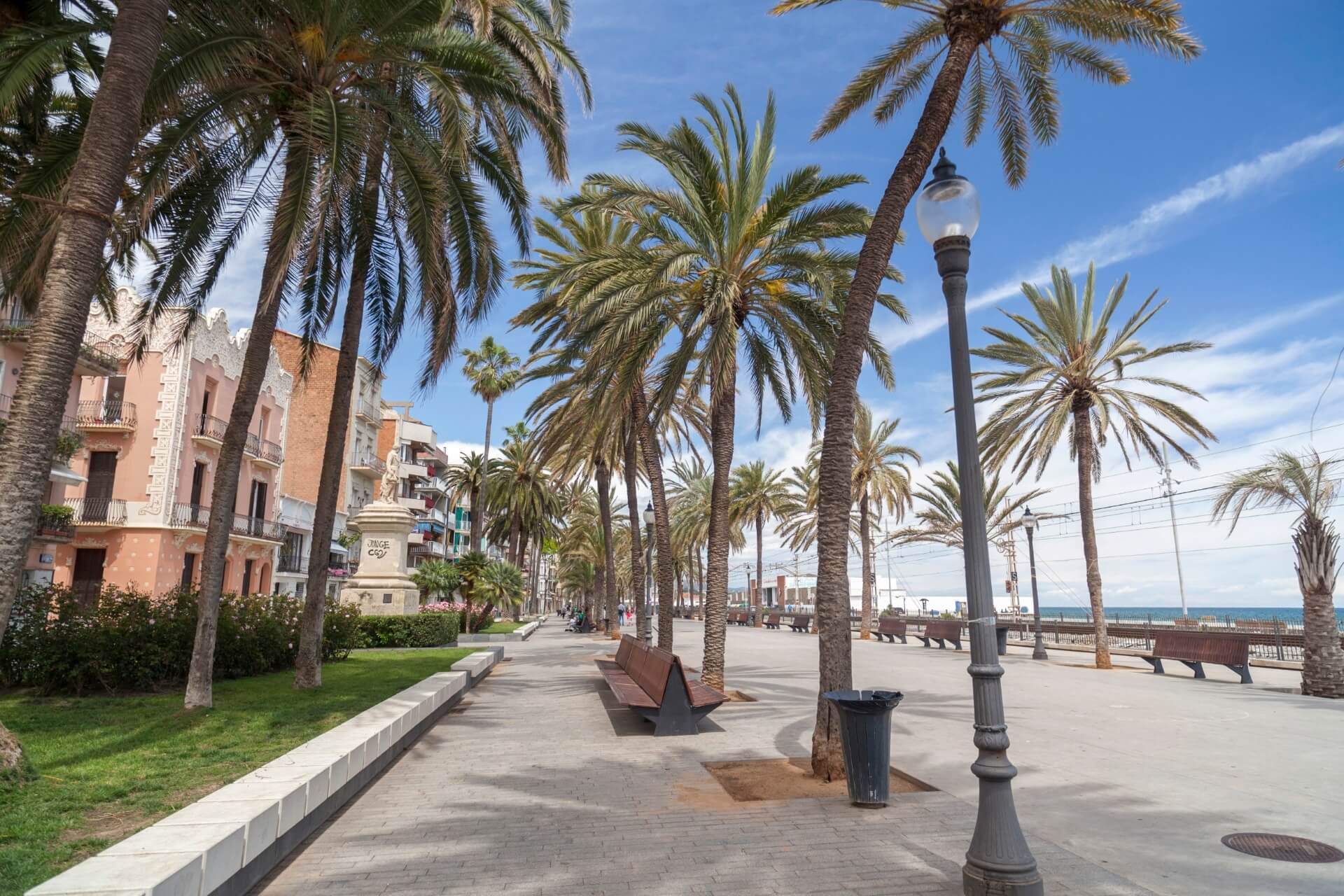
Many consider this ancient coastal town a suburb of Barcelona, only 10 km away. Badalona’s main attraction is its six-kilometer sandy beach lined with low-rise houses. Ancient Romans settled here before our era, and locals proudly preserve their Italian heritage and relics. The city museum displays ancient Roman baths, aqueducts, old aboriginal homes, and wall paintings.
Stroll through Turo del Caritg Park, lush with palm trees and exotic plants, beautiful both day and night under numerous lights. Badalona hosts various festivals, including an annual short film screening at the Zorrilla Theater. The city plans to further develop its cultural image with the upcoming “City of Music” venue for classical music concerts.
Mataró
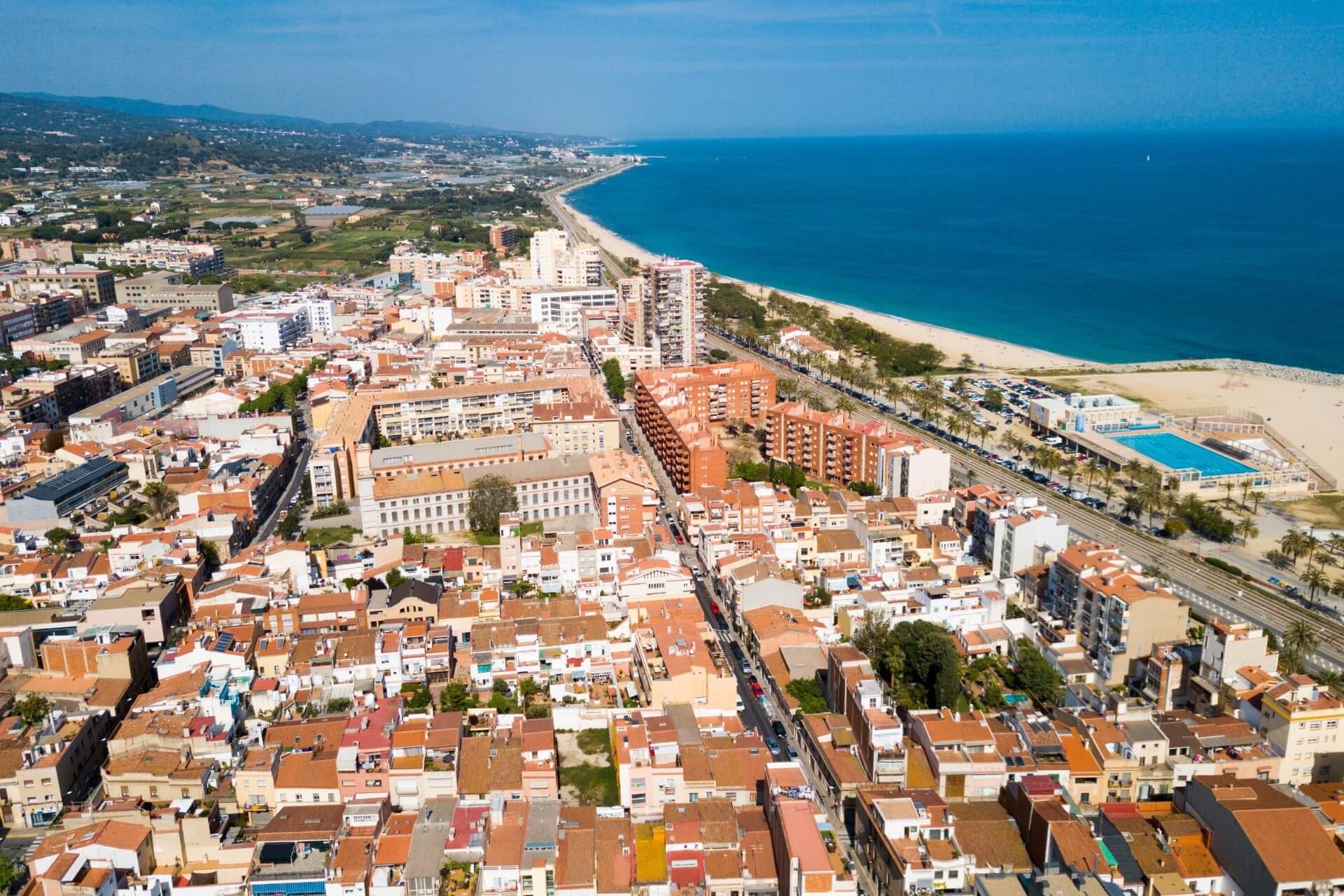
A Mediterranean town stretching along the coast, Mataró is 30 km from Barcelona, attracting tourists seeking a quieter sandy beach resort away from the bustling city. The artificial but impeccably clean and well-equipped beaches are sparsely populated compared to Barcelona.
Historical and cultural attractions are inland on a hill. The city museum, housed in a 16th-century building, showcases archaeological finds and more. Another architectural gem is the neoclassical Basilica of St. Mary, with a baroque interior. Part of the 16th-century fortress wall remains on one of Mataró’s streets. The town’s architectural masterpieces, like the Coll i Regas or Pereara houses, feature intricate designs that captivate visitors.
Sitges
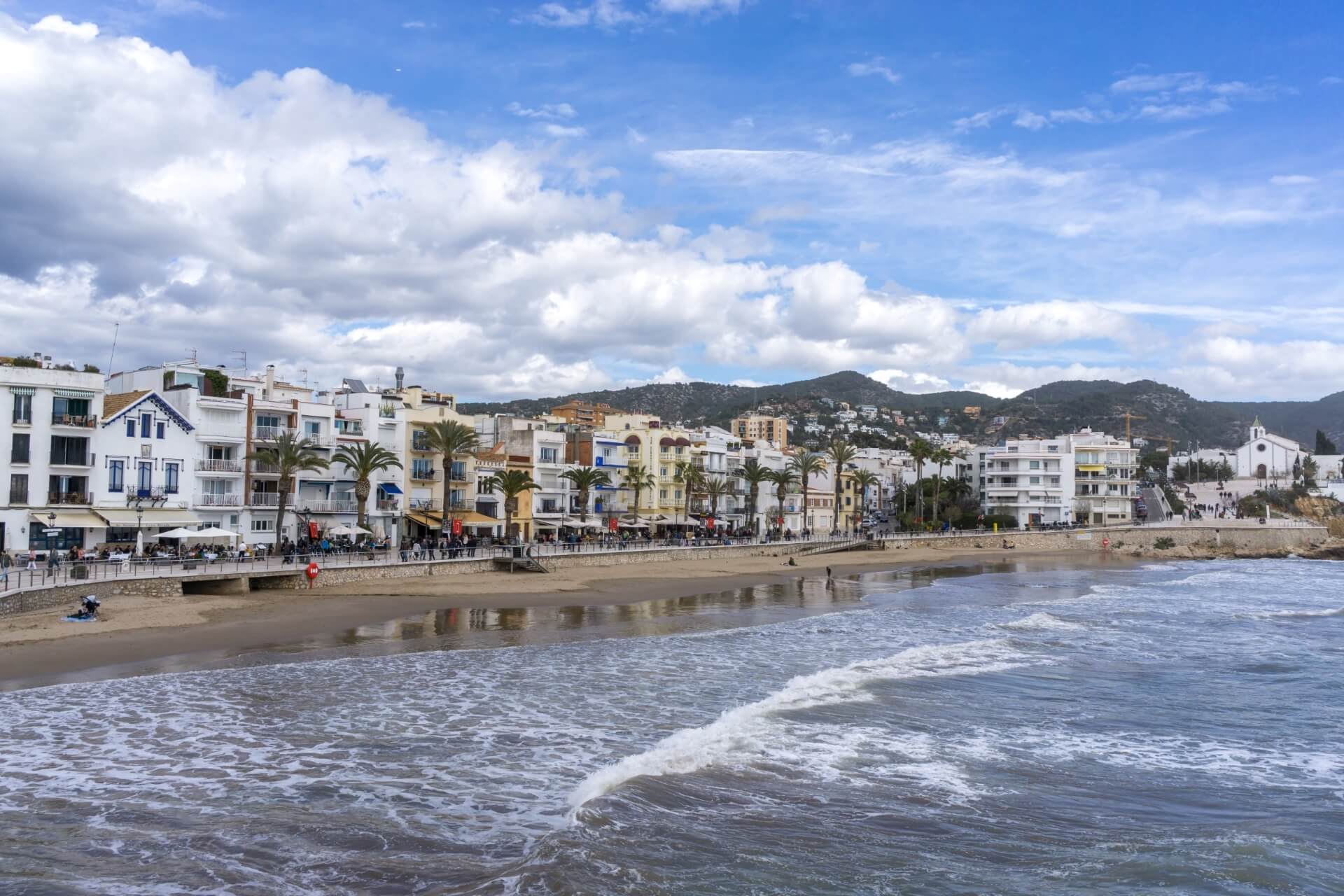
Once a fishing village, Sitges is now a resort town on the azure coast with consistently good weather, boasting over 300 sunny days annually. The renowned San Sebastián beach was named the best beach in Europe by the New York Times, attracting affluent Americans and Europeans, driving up property prices and forcing young locals to leave their homeland.
Sitges hosts countless parades, festivals, and carnivals year-round, from gay pride parades to harvest festivals, with vibrant, unforgettable performances. The abundance of nightclubs and bars along the coast gives the impression that Sitges never sleeps. However, beyond the nightlife, Sitges offers cultural indulgences, such as quiet streets, a Moroccan-style veranda, museums, galleries, chapels, churches, and palaces.
Lloret de Mar
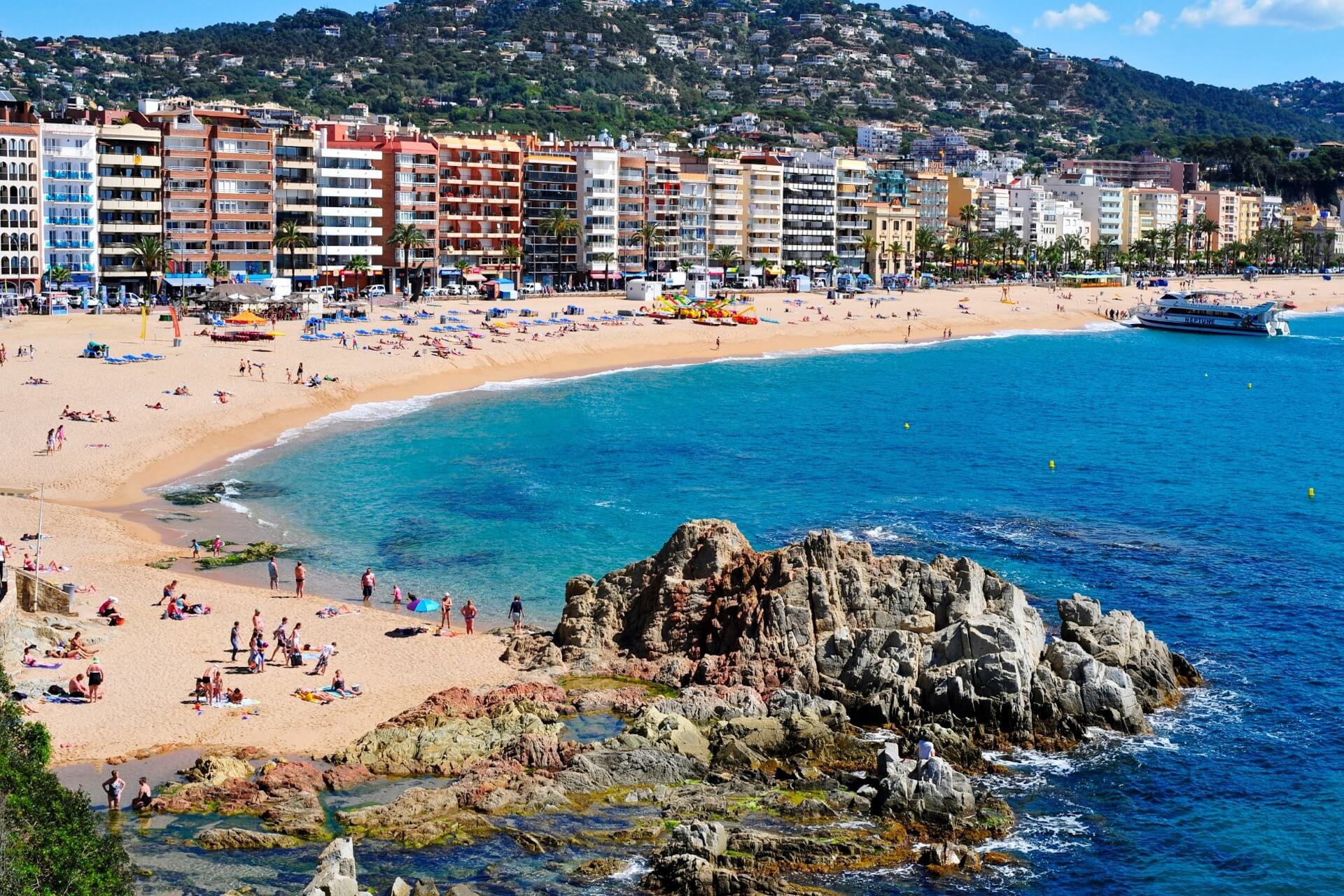
The main Mediterranean resort of Costa Brava welcomes numerous guests year-round. From May to October, it’s a youth hotspot with discos, clubs, open-air bars, nonstop music, numerous DJs, and nighttime entertainment. The quieter November to April period caters to older visitors, with the resort’s mild subtropical climate attracting tourists in colder months.
Lloret de Mar offers everything from an open-air necropolis museum to a large, bustling water park. The modernist cemetery is a curious cultural site, showcasing local burial customs. The “Cat House” museum, established in 2002, features a private collection exploring human-cat relationships through various themed exhibits.
Visitors can enjoy the water park, gnome park, church, chapel, castle, or the Santa Clotilde Gardens, ensuring varied and interesting experiences in Lloret de Mar.
Cardona
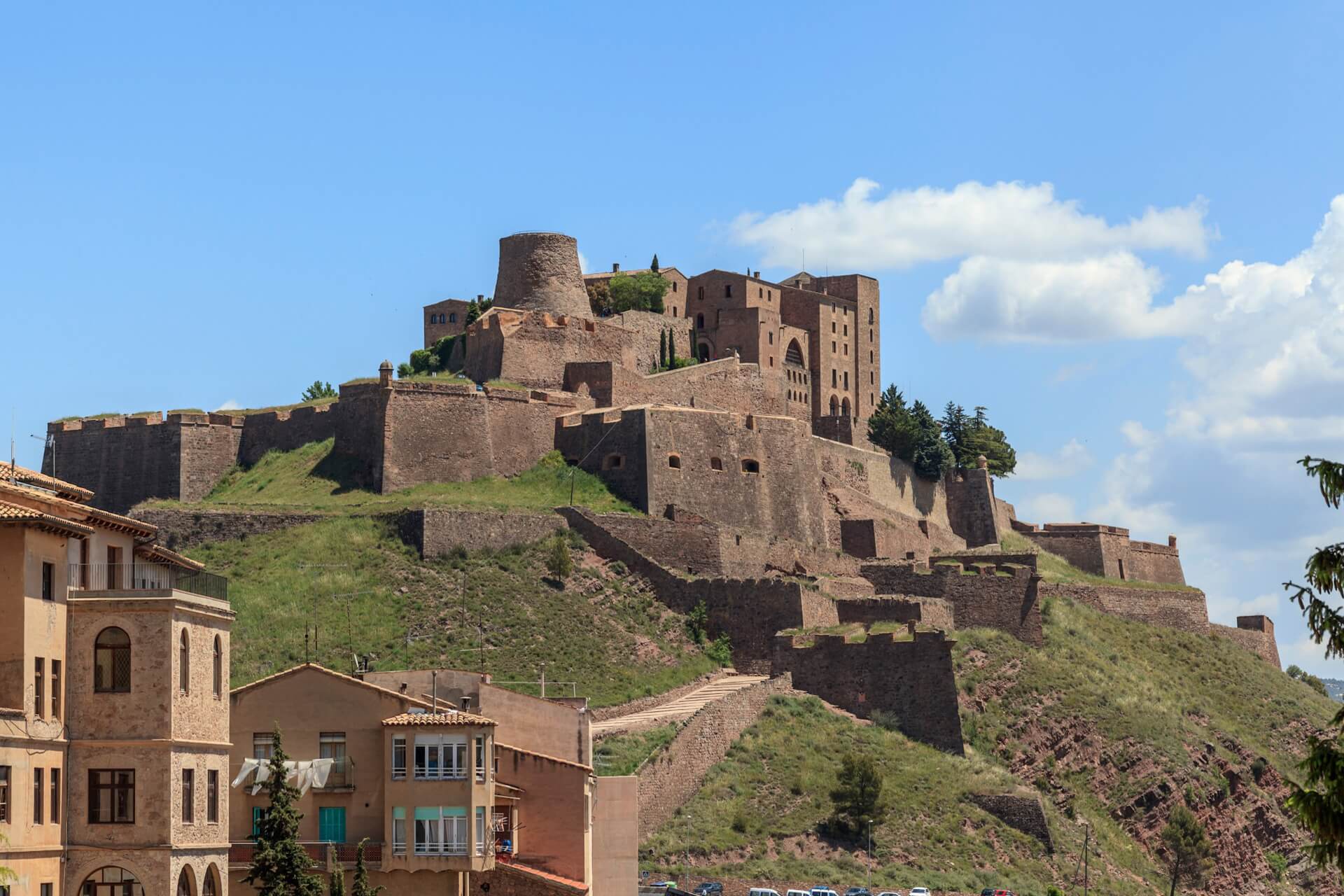
The impressive castle and namesake town of Cardona have housed several civilizations, each swept away by time. Today, Cardona, 80 km from Barcelona, is known for its castle, where mysterious events still occur. Built on a mountain for security and early warning of Muslim raids, the castle is now a fully restored hotel.
Room 712, infamous for its ghostly monk, moving objects, and eerie sounds, is available only upon request. Whether guests emerge with gray hair remains unknown.
Aiguafreda
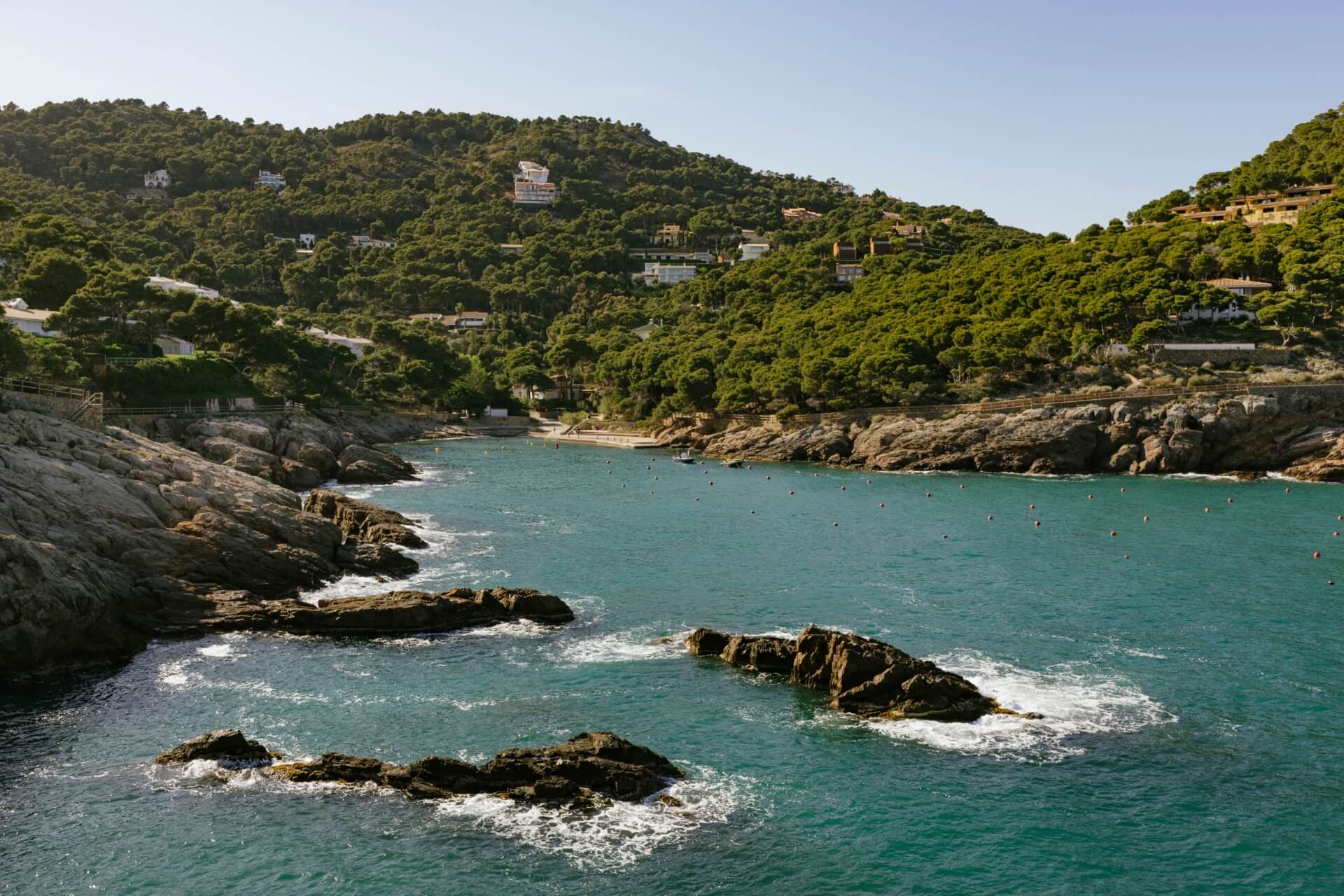
Just over 40 km away, this mountain medieval village is accessible via a scenic serpentine and forest path. This hiking route doesn’t require special physical preparation but consider your endurance before attempting it. The old village houses, seemingly from fairy tales, are nestled on the edge of a mountain ridge.
An old mill, impressive in size, is another relic along the way. High-altitude predators’ nests, like those of white-headed vultures, often hover over paths laid by locals and tour groups. This destination is ideal for creative souls seeking inspiration from the picturesque landscapes, which can revive even the longest creative block.
Couples or families with picnic supplies will find tranquility here, while athletes can test their strength by climbing the nearest peak (1,100 m above sea level).
Tarragona
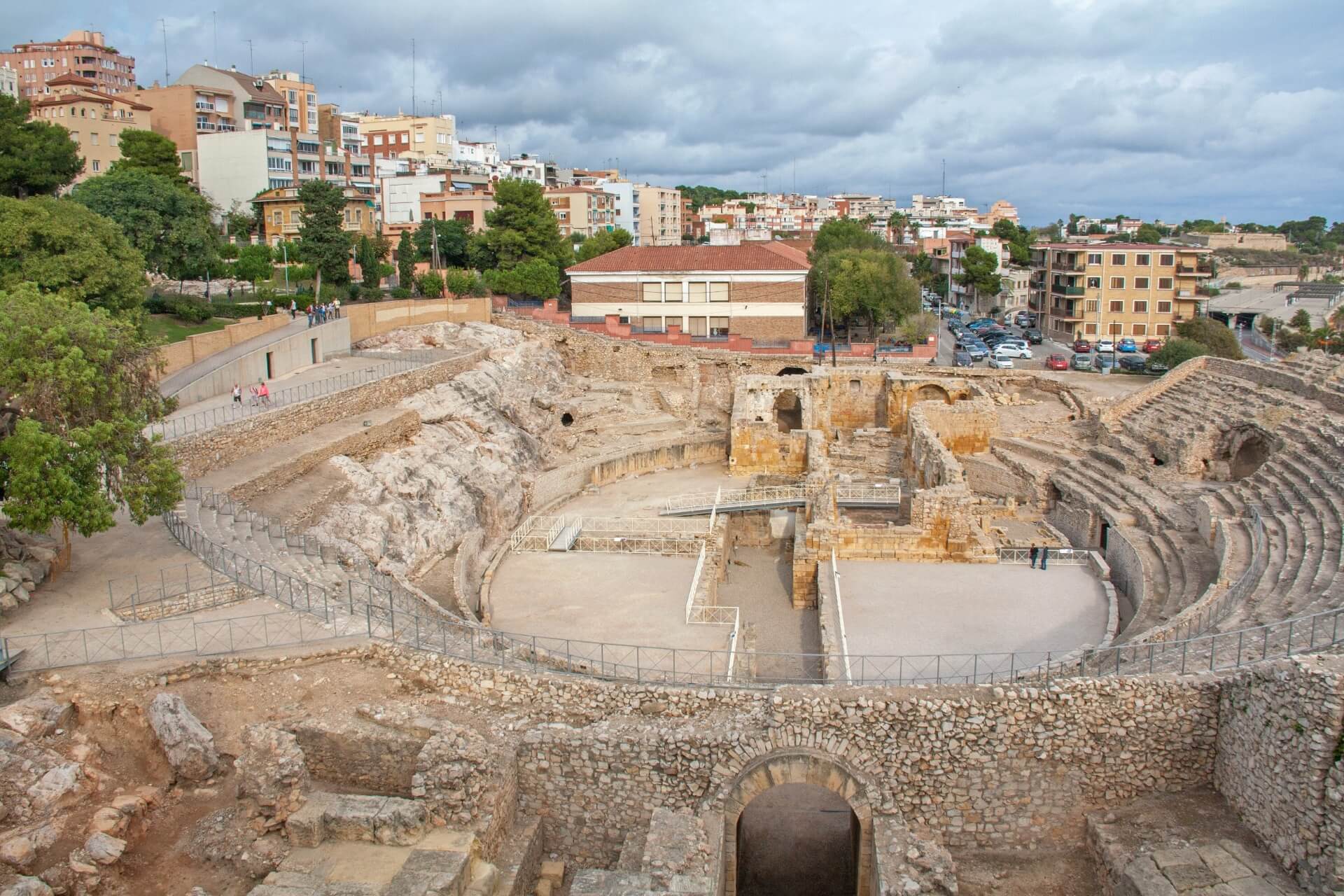
A port city in southern Catalonia, Tarragona offers a mix of beach relaxation, historical buildings, architectural highlights, and colorful national festivals. The Gothic windows of Tarragona Cathedral are visible from afar, symbolizing Christianity’s grandeur. Construction began in the 12th century and took about 200 years, resulting in Catalonia’s largest Catholic church.
Since bullfighting was banned in Catalonia, the 17,000-seat Tarraco Arena hosts concerts, festivals, performances, sports events, and various shows. The “Mediterranean Balcony” offers exceptional sea views and a captivating coastal panorama, with local lore suggesting that rubbing the iron railing brings lifelong luck.
Don’t forget to visit Tarragona’s Central Market, a monumental building resembling a train station or museum, with identical arched facades on all four sides. The spectacular human pyramid monument “Castellers,” featuring 259 life-size figures, is another must-see. These and other unique sites in Tarragona are better seen than heard about.
Vilanova i la Geltrú
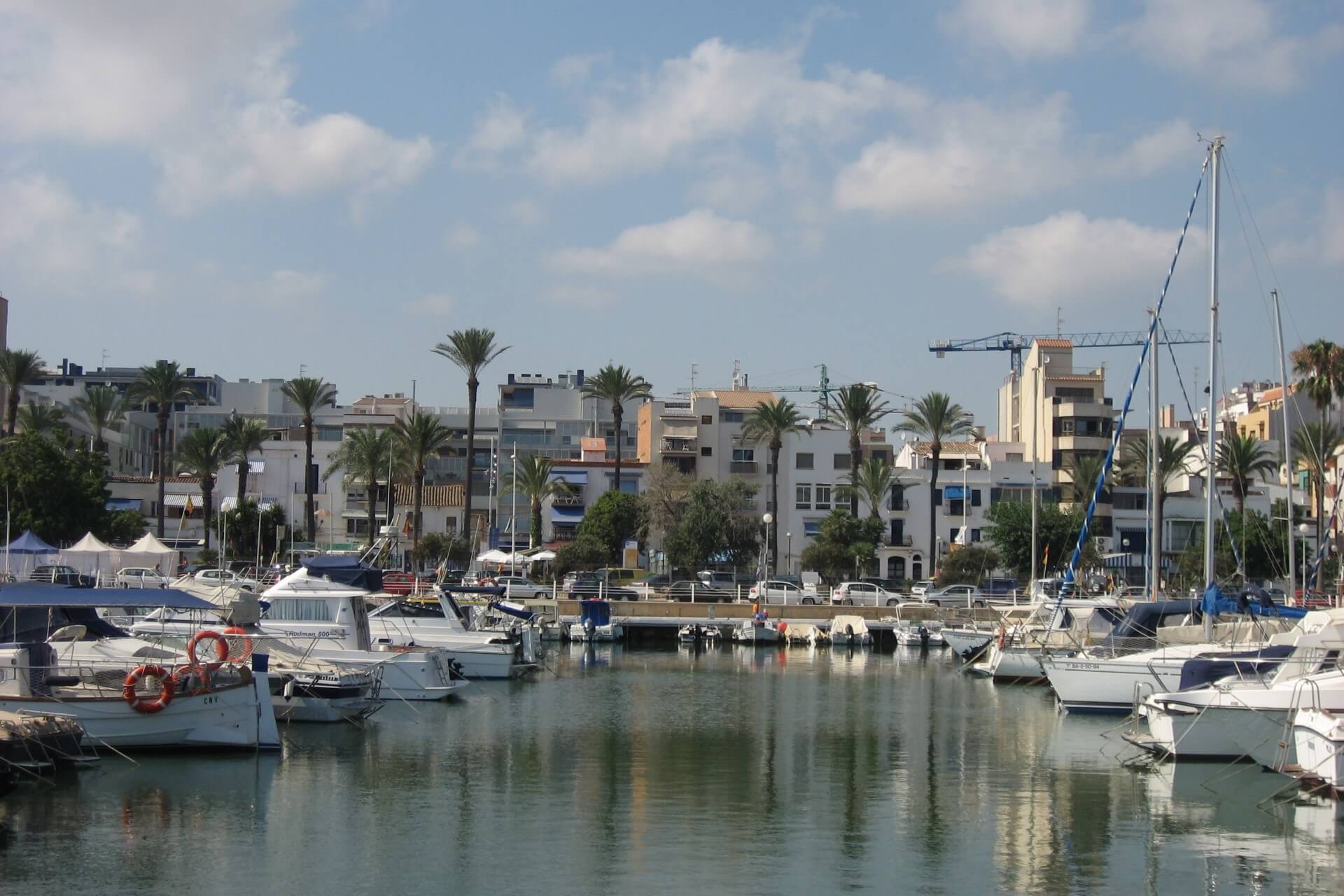
A Mediterranean gem, 40 km from Catalonia’s capital, Vilanova i la Geltrú is famous for its golden sandy beaches and well-developed tourist infrastructure, with many restaurants, cafes, beach areas, and hotels for all tastes and budgets, making it tempting to stay for a few days.
The Railway Museum offers an educational experience, showcasing the history of railway transport with real electric trains, carriages, and locomotives. The Romantic Museum transports visitors to the 17th-18th centuries with elegant curtains, decorative gilded stucco, intricate furniture designs, and a kitchen and pantry from the past.
Stroll along the central Rambla street, visit the city beach, the medieval Blue Tower, and the Art Museum for a varied and engaging visit.
Manresa
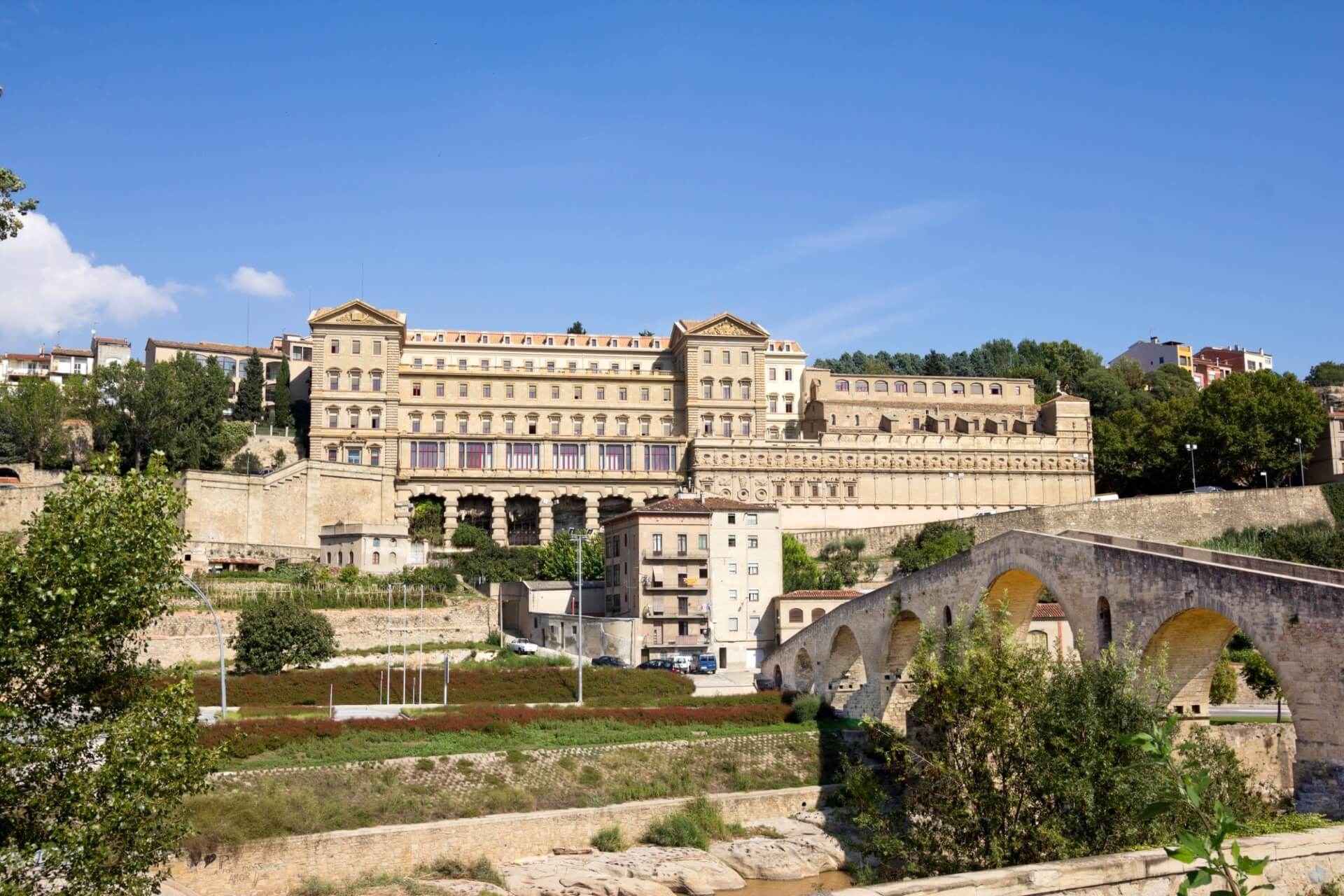
A highland historical oasis in central Catalonia, 55 km from Barcelona, Manresa is known for its monumental structures, hills, and shrines. The famous 13th-century bridge over the Cardener River is Manresa’s architectural signature. The majestic Basilica of Santa Maria de la Seu, built in the 14th century in Gothic style and repeatedly renovated, is another cultural landmark.
The basilica’s current appearance was shaped by 19th-century architects. Interestingly, it resembles Barcelona’s Santa Maria del Mar, as both were designed by the same architect. Manresa’s shrine, the Santa Cova Cave, attracts pilgrims from across Europe.
The city also features a church and a souvenir shop offering keepsakes from this holy, peaceful place. The city bridge and the historic buildings visible from Plaza San Domenec form a remarkable architectural ensemble.
Valencia
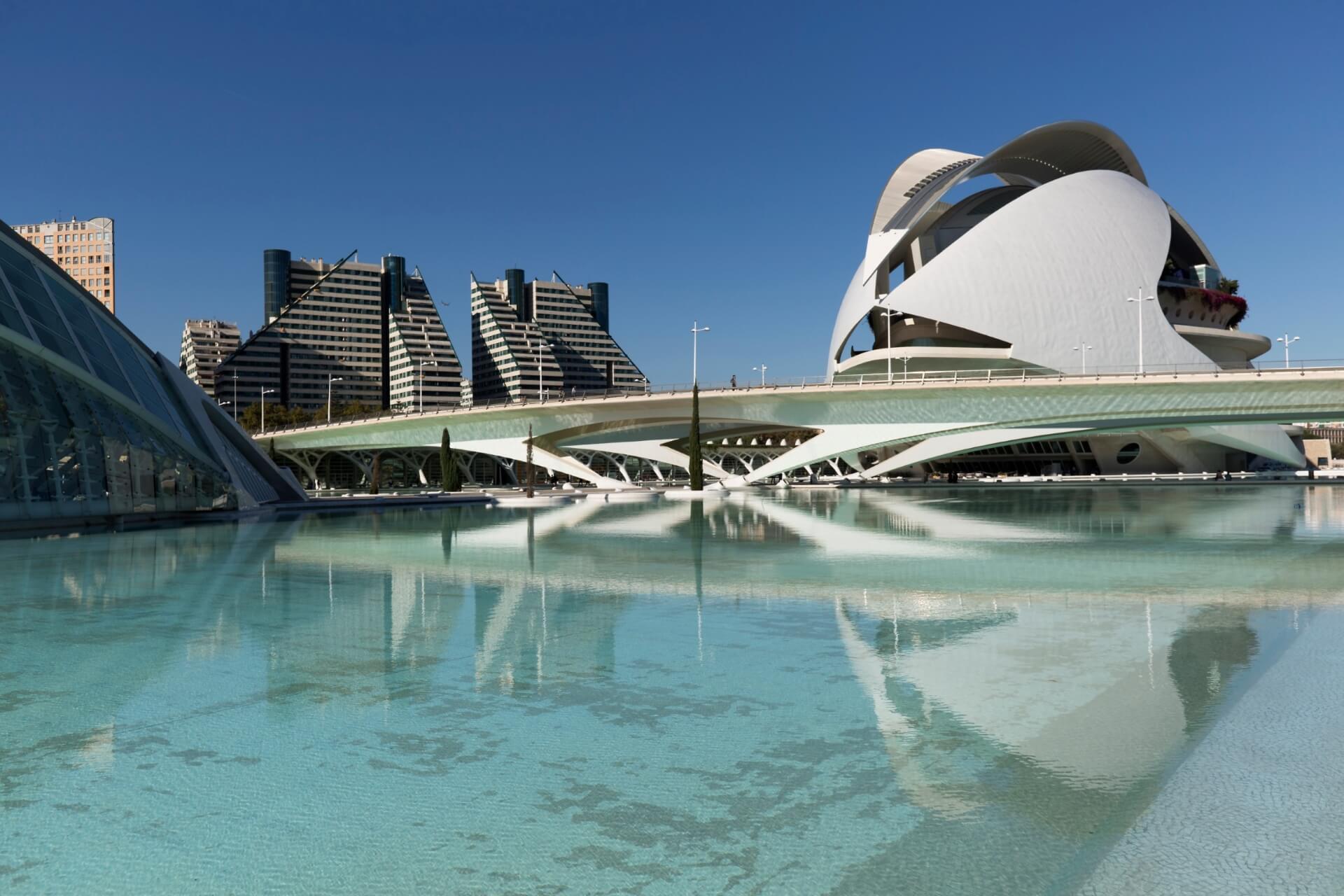
Valencia is renowned for its historical buildings, modern impressive structures, lush parks, and mild climate. The city’s main attractions are concentrated in its historic center. The futuristic City of Arts and Sciences building symbolizes modern Valencia.
This cultural and entertainment complex includes an IMAX cinema, theater, aquarium, planetarium, botanical garden, and science museum. Experience Spanish culture at Valencia’s Central Market, open Monday to Saturday, resembling a bustling Oriental bazaar.
The Bioparc Valencia offers a glimpse of African wildlife in natural habitats, divided into four zones: Madagascar, dry savanna, wet savanna, and equatorial African forests, housing 116 animal species and around 8,000 individuals.
Spending just one day in Valencia is challenging, as you’ll want to explore the city’s squares, picturesque El Carmen district, cathedrals, bullring, and other fascinating locations.
Salou
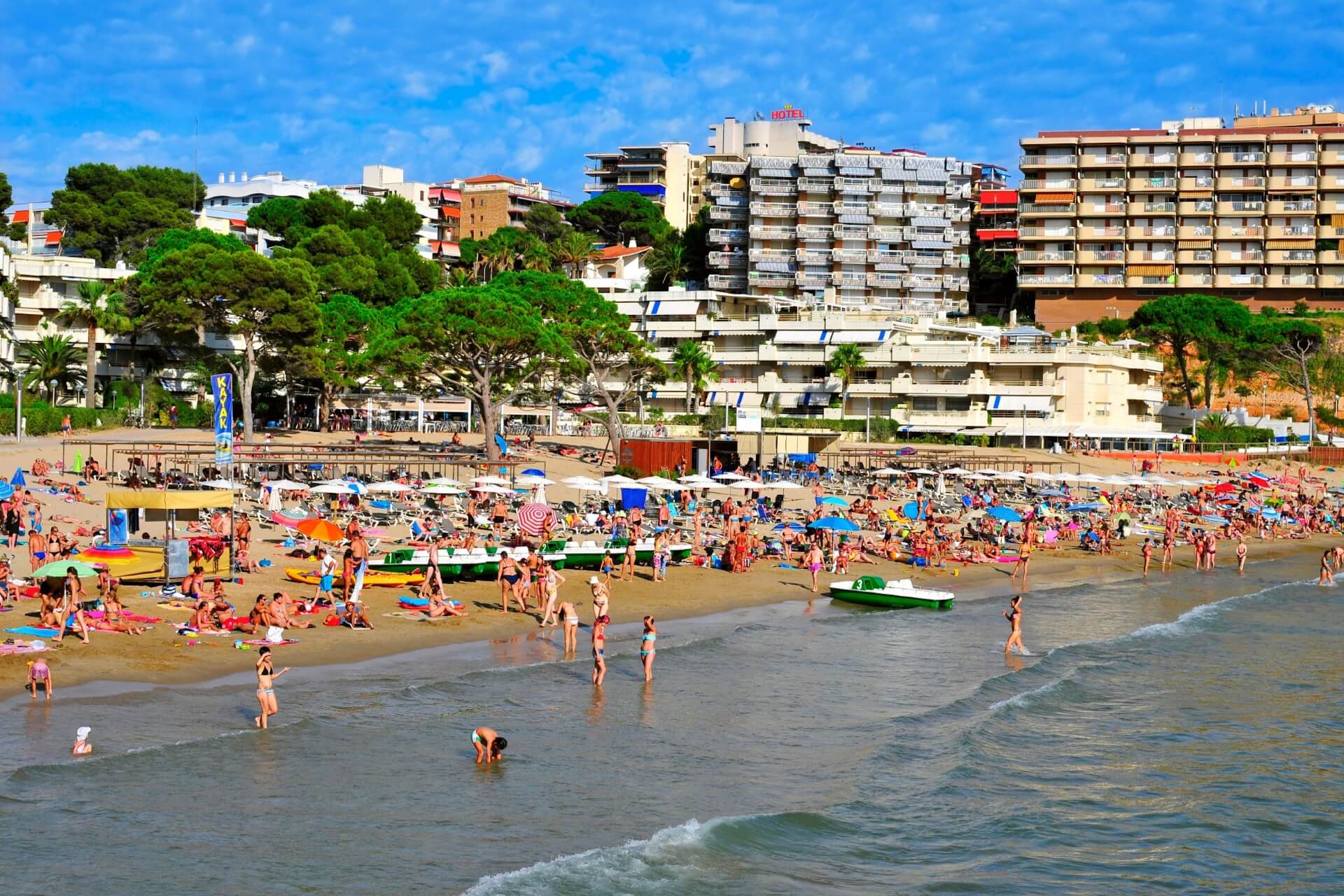
Once a fishing village, Salou has become a major Catalan resort, attracting beach lovers. Salou is famous for its captivating fountain show, where colorful water jets soar to music during evening promenades. The PortAventura theme park is another highlight.
10 Best Hotels Near PortAventura Park for Families and Fun
Even serious adults become joyful children here, with thrilling roller coasters, animated programs, and river rafting. The city park features decorative bridges over lily ponds and paths through lush Mediterranean vegetation.
King Jaume I Boulevard, along the shoreline, the Church of St. Mary del Mar, a Catalan estate, and other attractions deserve attention. Salou’s natural beauty offers residents and visitors a respite from city noise and bustle.
Zaragoza
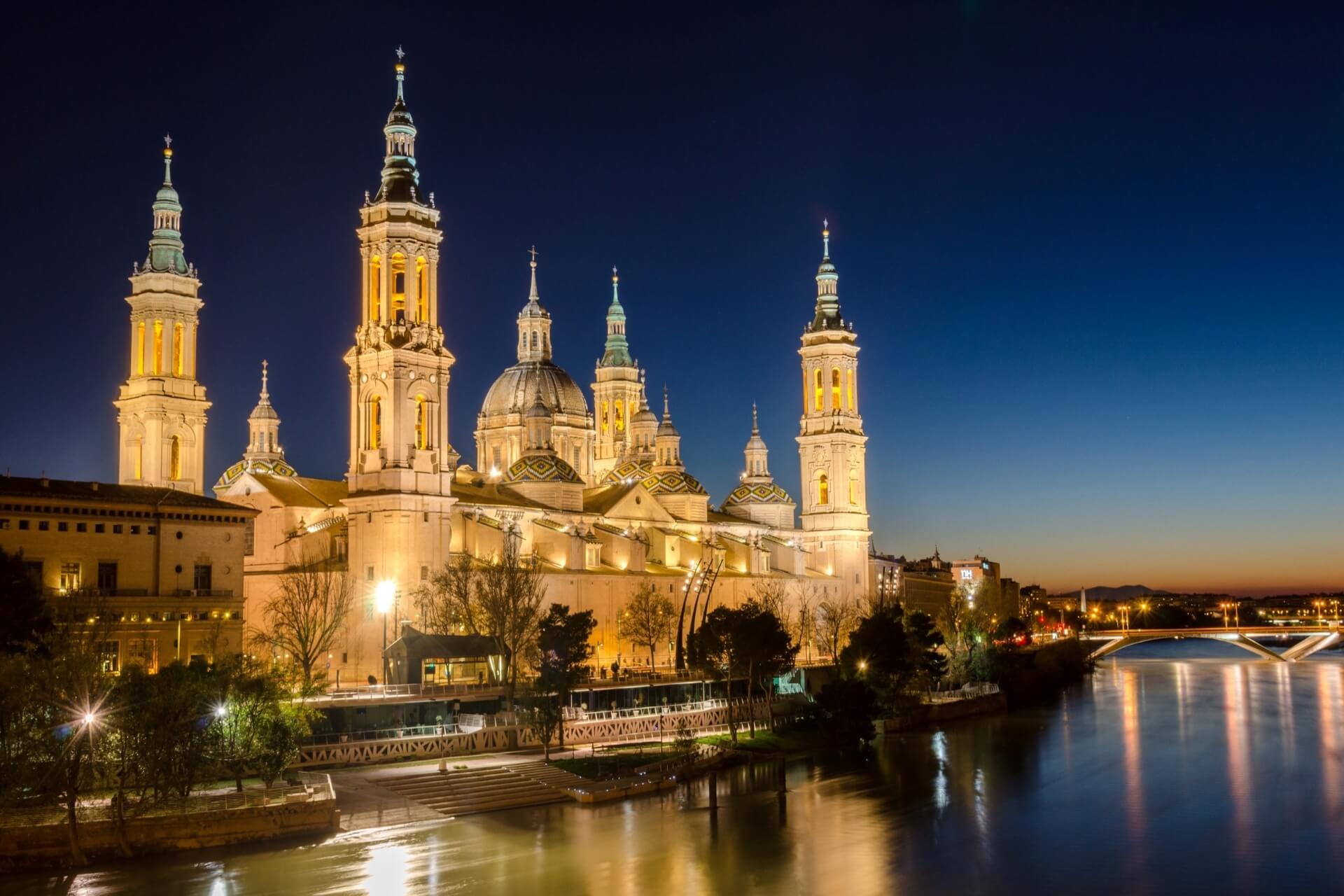
Zaragoza combines provincial charm with metropolitan grandeur, located between Barcelona and Madrid. The ancient city is a treasure trove of attractions, captivating even the most seasoned travelers. The unique Monasterio de Piedra Natural Park, 120 km from the city, is worth visiting. Founded in the 12th century amidst a beautiful nature reserve, the ancient architecture, moss-covered stone arches, and vaults create a mystical atmosphere.
Surrounding waterfalls (the highest at 50 m) add to the park’s enchanting ambiance. Zaragoza’s pedestrian Calle Alfonso street features elegant buildings on both sides. The famous Plaza del Pilar boasts a futuristic fountain amid stone jungles. The Espada fountain represents a map of Latin America, flowing into a pool shaped like South America.
Zaragoza also preserves a Roman theater, several stunning cathedrals, the magnificent Aljafería Palace, museums, a medieval stone bridge, and many other notable sites.
Andorra
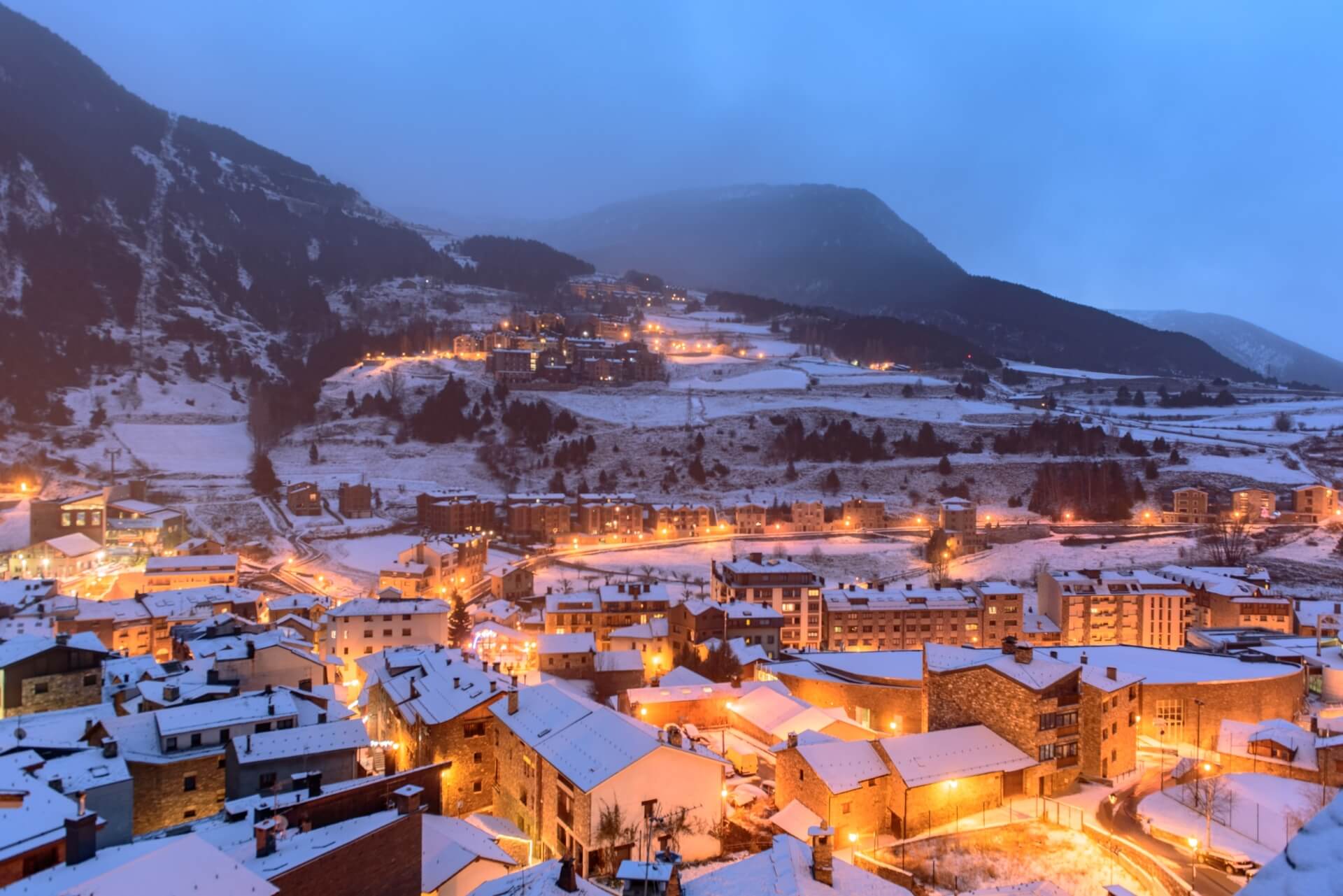
The tiny European state of Andorra is 223 km from Barcelona. Ski enthusiasts flock to the Andorran station of Grandvalira, offering over 200 km of ski slopes, three snow parks, and numerous tracks of varying difficulty, making it one of Europe’s best ski resorts. Surprisingly, Andorra is also a shopping haven.
With no VAT, shopaholics seek out great deals. The high-altitude principality has a capital, Andorra la Vella, resembling a classic European city on a smaller scale, with cobblestone streets, colorful low-rise houses, friendly locals, and many restaurants serving Spanish-like national cuisine.

